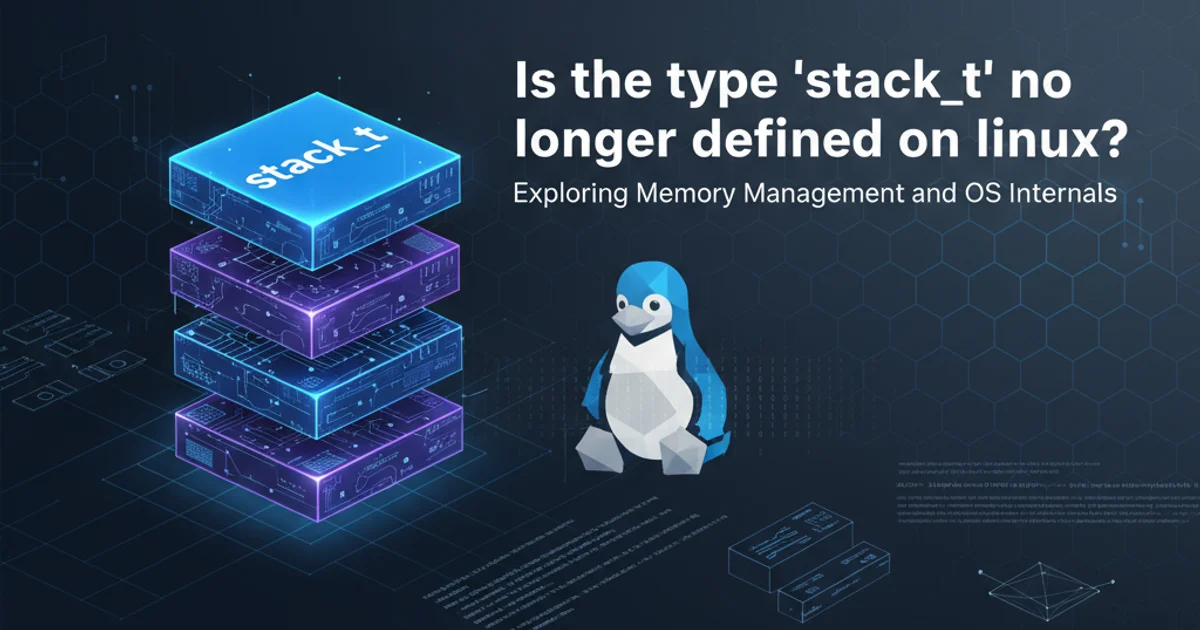Could not open JPA EntityManager for transaction; nested exception is java.lang.IllegalStateExcep...
Categories:
Resolving 'Could not open JPA EntityManager for transaction; nested exception is java.lang.IllegalStateException'

Understand and fix the common IllegalStateException when Spring/JPA fails to open an EntityManager for a transaction, often due to misconfigurations or lifecycle issues.
The error message Could not open JPA EntityManager for transaction; nested exception is java.lang.IllegalStateException is a common hurdle for developers working with Spring, JPA, and Hibernate. This exception typically indicates that the application context or the transaction management setup is preventing the EntityManager from being properly created or associated with the current transaction. It often points to issues with data source configuration, transaction manager setup, or the lifecycle of the EntityManager itself.
Understanding the Root Cause
At its core, this IllegalStateException means that Spring's transaction management, usually powered by JpaTransactionManager, failed to obtain an EntityManager instance when a transactional method was invoked. This can happen for several reasons, including:
- Incorrect Data Source Configuration: The data source might not be properly defined or accessible, preventing the
EntityManagerFactoryfrom initializing correctly. - Missing or Misconfigured
EntityManagerFactory: TheLocalContainerEntityManagerFactoryBean(or similar) might not be set up, or its properties (likedataSource,jpaVendorAdapter,packagesToScan) could be wrong. - Transaction Manager Issues: The
JpaTransactionManagermight not be correctly wired to theEntityManagerFactory. - Spring Context Loading Problems: The Spring application context might fail to load fully, leaving critical beans uninitialized.
- Multi-threading/Concurrency Problems: In some advanced scenarios, especially with custom thread management or Spring Batch,
EntityManagerinstances might be accessed outside their intended transactional scope or from different threads without proper synchronization.
flowchart TD
A[Transactional Method Call] --> B{Spring AOP Intercepts}
B --> C{Begin Transaction}
C --> D{Obtain EntityManager}
D -- Fails --> E["java.lang.IllegalStateException: Could not open JPA EntityManager"]
D -- Succeeds --> F[Execute Business Logic]
F --> G{Commit/Rollback Transaction}
G --> H[End Transaction]
E -- Leads To --> I[Application Failure]
D -- Requires --> J["Correctly Configured EntityManagerFactory"]
J -- Depends On --> K["Valid DataSource"]
J -- Depends On --> L["Proper JPA Vendor Adapter"]
C -- Managed By --> M["JpaTransactionManager"]
M -- Wires To --> JFlowchart of Transaction Management and EntityManager Acquisition
Common Solutions and Best Practices
Addressing this error typically involves reviewing and correcting your Spring and JPA configuration. Here are the most common areas to check:
BeanCreationException or similar issues that might precede the IllegalStateException.1. Verify Data Source Configuration
Ensure your DataSource bean is correctly defined and accessible. If you're using Spring Boot, this is often auto-configured, but in traditional Spring applications, you'll need to define it explicitly.
@Configuration
@EnableTransactionManagement
@EnableJpaRepositories(basePackages = "com.example.repository")
public class JpaConfig {
@Bean
public DataSource dataSource() {
DriverManagerDataSource dataSource = new DriverManagerDataSource();
dataSource.setDriverClassName("org.h2.Driver");
dataSource.setUrl("jdbc:h2:mem:testdb;DB_CLOSE_DELAY=-1");
dataSource.setUsername("sa");
dataSource.setPassword("");
return dataSource;
}
// ... other beans
}
Example of a basic DataSource configuration using DriverManagerDataSource.
2. Configure EntityManagerFactory Correctly
The LocalContainerEntityManagerFactoryBean is crucial for integrating JPA with Spring. It needs a DataSource, a JpaVendorAdapter (e.g., Hibernate), and packagesToScan to find your entity classes.
@Configuration
public class JpaConfig {
// ... dataSource bean
@Bean
public LocalContainerEntityManagerFactoryBean entityManagerFactory(DataSource dataSource) {
LocalContainerEntityManagerFactoryBean em = new LocalContainerEntityManagerFactoryBean();
em.setDataSource(dataSource);
em.setPackagesToScan("com.example.model"); // Your entity package
HibernateJpaVendorAdapter vendorAdapter = new HibernateJpaVendorAdapter();
vendorAdapter.setGenerateDdl(true); // For development, set to false in production
vendorAdapter.setShowSql(true);
em.setJpaVendorAdapter(vendorAdapter);
Properties jpaProperties = new Properties();
jpaProperties.setProperty("hibernate.hbm2ddl.auto", "update");
jpaProperties.setProperty("hibernate.dialect", "org.hibernate.dialect.H2Dialect");
em.setJpaProperties(jpaProperties);
return em;
}
// ... transactionManager bean
}
Configuring LocalContainerEntityManagerFactoryBean with DataSource and Hibernate.
3. Set Up JpaTransactionManager
The JpaTransactionManager is responsible for managing transactions. It must be wired to the EntityManagerFactory.
@Configuration
public class JpaConfig {
// ... dataSource and entityManagerFactory beans
@Bean
public PlatformTransactionManager transactionManager(EntityManagerFactory entityManagerFactory) {
JpaTransactionManager transactionManager = new JpaTransactionManager();
transactionManager.setEntityManagerFactory(entityManagerFactory);
return transactionManager;
}
}
Defining JpaTransactionManager and linking it to the EntityManagerFactory.
4. Ensure Transactional Context in Spring Batch
When using Spring Batch, especially with custom ItemReader or ItemProcessor implementations, ensure that your components are properly within a transactional context. If you're performing JPA operations outside of a step's transactional boundary, you might encounter this error. Often, this means ensuring your JobRepository and PlatformTransactionManager are correctly configured for Spring Batch.
@Configuration
@EnableBatchProcessing
public class BatchConfig {
@Autowired
private JobBuilderFactory jobBuilderFactory;
@Autowired
private StepBuilderFactory stepBuilderFactory;
@Autowired
private DataSource dataSource; // Injected from JpaConfig
@Autowired
private PlatformTransactionManager transactionManager; // Injected from JpaConfig
@Bean
public Job importUserJob(Step step1) {
return jobBuilderFactory.get("importUserJob")
.incrementer(new RunIdIncrementer())
.flow(step1)
.end()
.build();
}
@Bean
public Step step1(ItemReader<User> reader, ItemProcessor<User, User> processor, ItemWriter<User> writer) {
return stepBuilderFactory.get("step1")
.<User, User> chunk(10)
.reader(reader)
.processor(processor)
.writer(writer)
.transactionManager(transactionManager) // Explicitly set transaction manager
.build();
}
// ... ItemReader, ItemProcessor, ItemWriter beans
}
Spring Batch configuration showing explicit transactionManager assignment to a step.
EntityManagerFactory or DataSource beans, ensure that the correct ones are wired to their respective JpaTransactionManager and JpaRepository configurations. Use @Qualifier annotations if necessary to avoid ambiguity.5. Check for @Transactional Annotation Usage
Ensure that methods performing JPA operations are correctly annotated with @Transactional. If a method attempts to use an EntityManager outside of a transactional context, this error can occur.
@Service
public class UserService {
@Autowired
private UserRepository userRepository;
@Transactional
public User createUser(User user) {
return userRepository.save(user);
}
public User findUserById(Long id) {
// This method might not need @Transactional if it's read-only
// but if it involves lazy loading or complex queries, it might
return userRepository.findById(id).orElse(null);
}
}
Example of @Transactional annotation usage on a service method.
By systematically checking these configuration points, you can usually pinpoint and resolve the IllegalStateException related to EntityManager acquisition. The key is to ensure that Spring's transaction management has all the necessary components (DataSource, EntityManagerFactory, TransactionManager) correctly wired and initialized before any transactional operations are attempted.